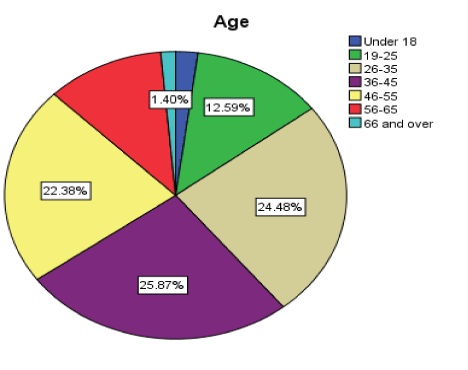
Figure 1: Age distribution chart.


Bander Alkhudairi1* Mohammed Alkarni2
1Department of scientific computing section, King Faisal Specialist Hospital & Research Centre, Kingdom of Saudi Arabia*Corresponding author: Bander Alkhudairi, Department of scientific computing section, King Faisal Specialist Hospital & Research Centre, Kingdom of Saudi Arabia, E-mail: balkhudairi@kfshrc.edu.sa
The importance of mobile health application has significantly increased over the past, and many people are getting on board in using the same to improve their healthcare conditions specially who visiting Physical and rehabilitation department. The present study explored the attitude and perception of patients towards the use of the technology. Also, the study examined the determinants’ of the patients’ intention to install and use the mobile health application on their devices-smartphones, computers, and tablets. A total sample of 144 respondents was used. Descriptive and Chi-Square analysis technique was used to explore the data. The results of the study reported positive attitude concerning the reliability of the application in providing healthcare information (46.15%), and ease of the technology in delivering healthcare services (51%). Additionally, the majority of the patients from Physical and rehabilitation department strongly agreed that they would install the application in their devices (96.5%). The Chi-Square results further reported that intention to install and use the app was significantly related with perception about the reliability of the information, and perceived ease or difficulty in using the same. The study concluded that the general attitude of the mobile health application is positive, although studies examining specific forms are required to eliminate the ambiguous nature of the currently available information.
Perception and Attitude; Mobile Health Application; Intention to Use; Physical and Rehabilitation
The use of the mobile application in healthcare services has increased significantly over the past few years. The internet technology, smartphone, and other related innovation have had a profound effect on the same. According to Lu C, et al. [1], as of 2018, over 50% of Smartphone users around the globe have at least one health mobile application installed on their devices. This statistic does not include other devices such as personal computers, tablets, and laptops; as such, the figures could be even higher than the reported estimates. The health-related applications installed on the mentioned devices collectively are referred to as mhealth applications. Mostly, the information exchange between the patient and doctors, or other related parties is done over the internet. The mhealth applications have had a significant impact on how healthcare is delivered concerning geographical and organizational challenges Lu C, et al. [1]. With such applications, patients can access health information remotely; either from their physicians whom they can communicate with by using the apps that have cameras installed on them. Also, users can receive information regarding their conditions over the internet using the same application. The devices can also be used by practitioners such as nurses and therapists to follow-up on their patients’ healthcare condition and recovery trend. Indeed, the technology has had such a fundamental effect in the healthcare industry. Furthermore, it is compatible with telemedicine-a growing electronic healthcare delivery system that allows healthcare delivery to patients in remote areas.
In spite of the numerous advantages that have been mentioned in association with mhealth applications, there remain challenges that could potentially hinder its optimal effectiveness; notably, the patients, or users’ attitude towards the application. The present paper investigates the potential determinants of the acceptance and use of the technology. Among the factors explored, include users’ ownership of devices, perceived effectiveness of the applications, and users’ perceived difficulty. Literature has since been done about the effectiveness of the e-application technologies in healthcare service provision as presented in the section that follows:
Lee K, et al. [2] explored the effects of self-monitoring on the patient’s engagement and long-term use of the mobile health application. The study was conducted among 1,439 users who had the application installed on their phones. A random effect model was used to determine the application use over a given period, and a Cox proportional hazard model to determine the probability of the patients to stop using the application. The results of the study reported that the applications were largely used during the first 25.62 weeks followed by gradual reduction. Nevertheless, the reduction in usage was determined to be associated with the purpose for continued use. Self-monitoring purpose was found to be an important determinant, with 80% of the respondents reporting continued use after the initial adoption period compared to 60% of non-self-monitoring users Lee K, et al. [2]. The results of the study indicate that the use of mobile health application for monitoring individual’s self-health is a fundamental determinant of acceptance and use.
Byambasuren O, et al. [3] conducted a systematic review of the mobile health application concerning their effectiveness and challenges. The reviews were done from 2008 onwards. Twenty-three different randomized controlled trials were included in the study. The studies explored stand-alone mobile health application and their effectiveness. The results of the study reported that few studies had been done in reviewing the stand-alone mobile health application. Moreover, the few studies that had been reviewed reported significantly smaller sample sizes, which the researcher cautioned, could be a potential source of bias. As such, Byambasuren O, et al. [3] concluded that although studies reviewed indicated a positive effect of the mobile health applications, the findings so far are less conclusive, and this is largely due to few studies that explore the effectiveness of specific mobile health applications.
Laing SS, et al. [4] explored the knowledge of mobile health technology and practices among the low-income population in Washington and Washington D.C. 167 patients seeking healthcare services at a community healthcare facility were provided with 47- item questionnaires to fill in appropriately. The outcome variables examined in the study included knowledge of Smartphone use, medical application knowledge, and practices. The predictor variables included age, income, and ethnicity. The authors used a multilogistic regression model. The results of the study reported that age and income were significant predictors of knowledge and use of the mobile health application. Younger respondents were found to be more likely to use the mobile health application compared to the older respondents. Additionally, respondents who earned less than $ 20,000 per year were less likely to use the mobile health application than the counterparts were in the upper age bracket Laing SS, et al. [4]. The study further reported that access to smartphones, knowledge of their use, and the use of mobile health application are essential determinants of the effectiveness in delivering healthcare services.
Reddy R, et al. [5] researched about ambulatory patients’ preferences and use mobile health applications. The study examined 308 patients. Both exploratory and logistic regression analysis were used in the study. The results indicated that the majority of the patients had a positive attitude towards the mobile health application. The results further indicated that patients between 18 and 29 years and income bracket $ 30,000 and $ 74,000, were more likely than others to adopt and use the mobile health application on their phones Reddy R, et al. [5]. The results are consistent with those reported by Laing SS, et al. [4] about the age, and income as the main determinant of the patients, use of mobile application technology for various healthcare issues. Additionally, patients of the age >70 were uncomfortable with using the mobile health application Reddy R, et al. [5].
A quantitative study was the primary design used for the study. A quantitative research study is one that uses numerical operators to explore the research topic. It is based on the positivist research philosophy Creswell JW, et al. [6]. Both survey and correlational study were used as sub-types of the quantitative research design. The survey design was used to determine the distribution of different study variables. The correlational research was used to explore the relationship between the patients’ use of mobile health application and other predictor variables such as perception of effectiveness, difficulty, and access to relevant devices.
The 144 respondents in this research were obtained from the database of three public hospitals (name withheld) in Saudi Arabia. The selected respondents must have been active patients for all years and enrolled in the hospitals’ technology-based intervention program. Each of the participants was sufficiently engaged by the respective hospital before filling out web survey administered through the hospitals website. The participants had one week to fill out the closeended web questionnaire and submit.
The primary materials used for the study included the close-ended web survey questionnaires, the statistical package for social scientists (SPSS), and computers on which the survey was sent and received from the respondents.
All the respondents filled and returned the questionnaires; hence, the response rate was 100%. The sample total was 144 participants, and comprised of 78 males and 66 females. The domineering age bracket were 36-45 (25.9%) and 46-55 (22.38%) as shown in figure 1.

Figure 1: Age distribution chart.
Asked whether patients would prefer to have the medical application installed on their handsets such as smartphones and tablets, the majority (61.54%) strongly agreed that they would, 26.57% agreed, while 1.4% of the respondents strongly disagreed (Figure 2). Also, a larger number (37.06%) strongly agreed that they would use health application if recommended by a professional compared to the 4.9% who strongly disagreed (Figure 3).
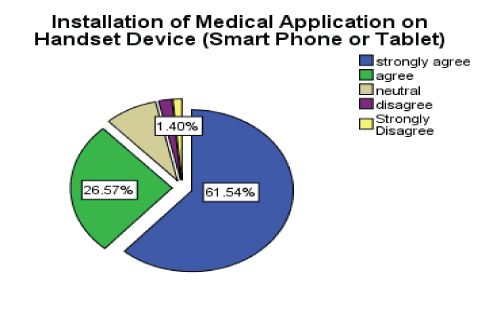
Figure 2: Medical application installation on Smart Phone or Tablet chart.
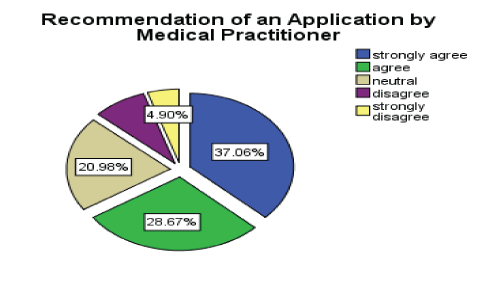
Figure 3: Medical practitioner recommendation of applications chart.
Figure 4 shows that many respondents strongly agreed (50.35%) to recommend the application to family members, 37.06% agreed and only a few (0.70%) strongly disagreed. Many patients also use mobile phones compared to tablets and laptops as shown in figure 5.
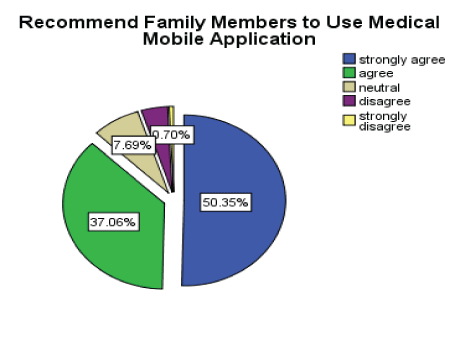
Figure 4: Participants’ willingness to recommend medical mobile application to family members.
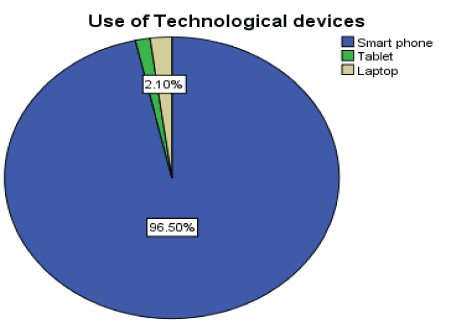
Figure 5: Distribution of the use technology devices chart.
Based on figure 6 above, the majority 42.66% of the respondents agreed that they were able to use the mobile application as a means of getting information for their medical condition. Another 33.57% strongly agreed, 18.18% were neutral, and only 1.4% strongly disagreed. Besides, the majority (48.25%) strongly agreed that using computers, smartphones, and tablets is easy, 41.26% agreed, 2.8% disagreed, and only 0.7% strongly disagreed that the use of these technologies was easy (Figure 7).
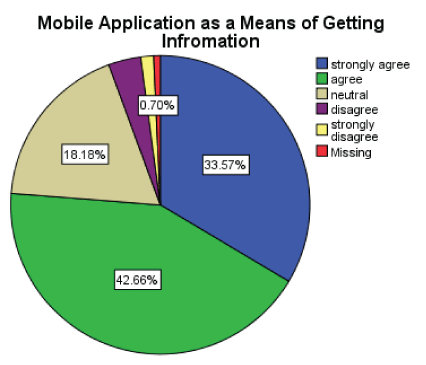
Figure 6: Participants who use mobile application as a means of getting information.
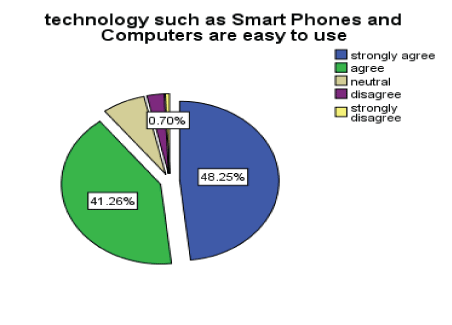
Figure 7: The ease of using technology such as Smart Phones and Computers.
As shown in figure 8, 37.76% of the respondents disagreed that reading information on a smartphone was difficult, 10.49% strongly disagreed and 24.48% were neutral. Another 16.78% agreed that reading information from the devices was difficult and only 10.49% strongly agreed. Asked whether there was a practical difficulty in using the application, a majority (83.22%) disagreed, and the rest (16.78%) agreed (Figure 9).
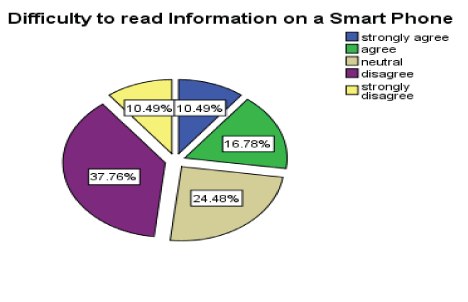
Figure 8: Difficulties in reading information on a Smart Phone.
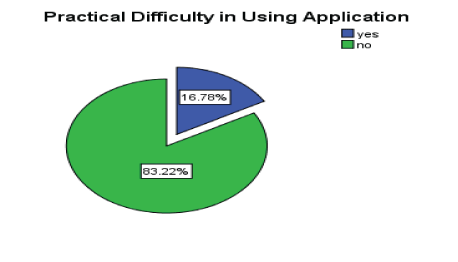
Figure 9: Practical difficulty in using application.
Regarding the attitude of the patients towards the use of the application, the majority of the respondents reported a positive attitude. When asked about their perception of the application’s reliability in delivering efficient healthcare, 46.15% of the respondents strongly agreed, 33.57% agreed, and 16.78% were neutral. Only 0.7% strongly disagreed concerning the same (Figure 10). Based on whether replacing brochures with the technology would make healthcare delivery more efficient; 43.36% strongly agreed, 37.76% agreed, and only 1.4% strongly disagreed (Figure 11).
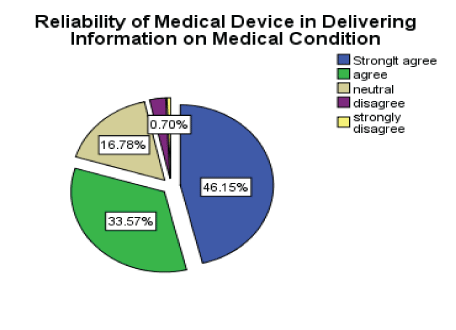
Figure 10: Reliability of medical device in delivering information on participants’ medical condition.
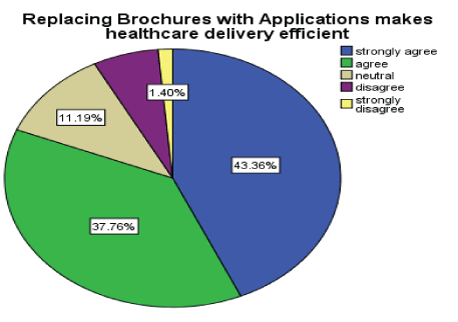
Figure 11: Replacing Brochures with applications makes healthcare delivery efficient.
Asked about the ease of using the technology in delivering health services, 51.05% of the participants strongly agreed, 33.36% agreed, and 8.39% were neutral. Only 0.7% strongly disagreed (Figure 12).
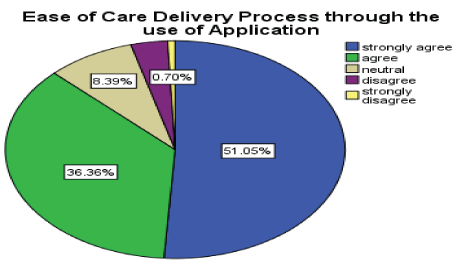
Figure 12: Ease of Care delivery process the use of application.
The majority of the respondents were undecided when asked if they thought that brochures are unreliable sources of medical information (Figure 13). The respondents’ positive attitude was re-affirmed by the majority who reported to get information about their medical condition from the internet (Figure 14).
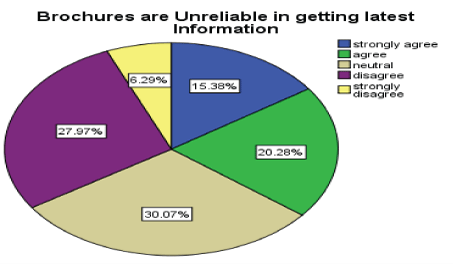
Figure 13: Whether brochures are unreliable source of latest information.
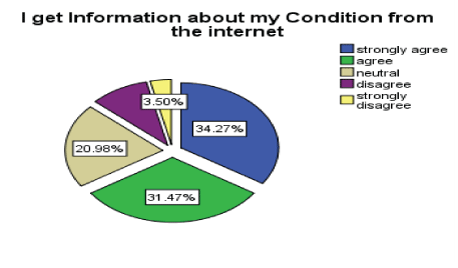
Figure 14: Participants who get information about their condition from the internet.
The following hypotheses are used to evaluate patients’ perceptions and attitude towards the use mobile health applications.
1H0 -There is no relationship between users’ intention to install and use mobile health applications, and how they perceive its usefulness in:
2H0-There is no relationship between users’ intention to install and use mobile health applications, and their attitude towards:
3H0-There is no relationship between users’ intention to install and use mobile health applications, and their perception on:
4H0 -There is no relationship between users’ intention to install and use mobile health applications, and their perception regarding difficulties in using devices or applications.
For the purpose of Fisher’s test simplification, the data set is categorized by combining two cells as those who agreed (strongly agree and agree) and disagreed (disagree and strongly disagree). The neutral respondents could fall either way; therefore, they will not influence the outcome of this test.
According to tables 1-4, the Fisher Exact Test reveals that there is a significant relationship between the installation of mobile health application and the patients’ perception of the reliability of the apps in delivering healthcare information. The p-values are below 0.05/4, which indicates significance after multiplicity adjustment using Bonferroni. Hence, the null hypothesis is rejected.
| Expected Values | Chi-Square Test | ||||||||||
| Install App on device | Care delivery process | Way of getting medical information | Information on the Internet | Total | Summary | Alpha | 0.05 | ||||
| Agreed | 121.1283096 | 121.1283096 | 107.2586558 | 104.4847251 | 454 | Count | Rows | Cols | df | ||
| Disagreed | 9.871690428 | 9.871690428 | 8.741344196 | 8.515274949 | 37 | 491 | 2 | 4 | 3 | ||
| Total | 131 | 131 | 116 | 113 | 491 | ||||||
| Chi-Square | |||||||||||
| Fisher Exact Test | chi-sq | p-value | x-crit | sig | Cramer V | ||||||
| Pearson's | 18.5793 | 0.000334 | 7.814728 | yes | 0.194524 | ||||||
| p-value | 0.001171097 | Max likelihood | 16.04363 | 0.001111 | 7.814728 | yes | 0.180763 | ||||
Table 1: P-value for hypothesis 1H0.
| Expected Values | Chi-Square Test | ||||||||||
| Install App on device | Recommended by medical Practitioner | Recommend App to family | Doctors response | Total | Summary | Alpha | 0.05 | ||||
| Agreed | 119.2645833 | 101.9666667 | 120.175 | 95.59375 | 437 | Count | Rows | Cols | df | ||
| Disagreed | 11.73541667 | 10.03333333 | 11.825 | 9.40625 | 43 | 480 | 2 | 4 | 3 | ||
| Total | 131 | 112 | 132 | 105 | 480 | ||||||
| Chi-Square | |||||||||||
| Fisher Exact Test | chi-sq | p-value | x-crit | sig | Cramer V | ||||||
| Pearson's | 14.1861 | 0.002662 | 7.814728 | yes | 0.171914 | ||||||
| p-value | 0.002442212 | Max likelihood | 14.4675 | 0.002333 | 7.814728 | yes | 0.173611 | ||||
Table 2: P-value for hypothesis 2H0.
| Expected Values | Chi-Square Test | ||||||||||
| Install App on device | Preference of Brochures over Apps | Brochures are unreliable | Apps make healthcare more efficient | Total | Summary | Alpha | 0.05 | ||||
| Agreed | 100.7478814 | 87.67372881 | 76.90677966 | 97.67161017 | 363 | Count | Rows | Cols | df | ||
| Disagreed | 30.25211864 | 26.32627119 | 23.09322034 | 29.32838983 | 109 | 472 | 2 | 4 | 3 | ||
| Total | 131 | 114 | 100 | 127 | 472 | ||||||
| Chi-Square | |||||||||||
| Fisher Exact Test | chi-sq | p-value | x-crit | sig | Cramer V | ||||||
| Pearson's | 95.51915 | 0.000000 | 7.814728 | yes | 0.449857 | ||||||
| p-value | 0.000000 | Max likelihood | 102.192 | 0.000000 | 7.814728 | yes | 0.465305 | ||||
Table 3: P-value for hypothesis 3H0.
| Expected Values | Chi-Square Test | ||||||||||
| Install App on device | Device are easy to use | Easy to read info on phones | No difficulty using apps |
Total | Summary | Alpha | 0.05 | ||||
| Agreed | 112.431068 | 114.1475728 | 92.69126214 | 122.7300971 | 442 | Count | Rows | Cols | df | ||
| Disagreed | 18.56893204 | 18.85242718 | 15.30873786 | 20.26990291 | 73 | 515 | 2 | 4 | 3 | ||
| Total | 131 | 133 | 108 | 143 | 515 | ||||||
| Chi-Square | |||||||||||
| Fisher Exact Test | chi-sq | p-value | x-crit | sig | Cramer V | ||||||
| Pearson's | 66.93131 | 0.00000 | 7.814728 | yes | 0.360505 | ||||||
| p-value | 0.0000 | Max likelihood | 64.61245 | 0.00000 | 7.814728 | yes | 0.354205 | ||||
Table 4: P-value for hypothesis 4H0.
The results of the study reported that the patients generally have a positive attitude and perception towards mobile health application. Additionally, the relationship between intention to use the apps and attitude and difficulty were statistically significant. These results are concurrent with those that have been reported in other similar studies. Nasir S, et al. [7] explored the perception and attitude of consumers and physicians on the mobile health application. The results indicated that the knowledge and belief by both groups were positive, although there were concerns about the privacy of the information over the electronic media. Similar findings were also reported by Atienza AA, et al. [8]. The positive perception of the mobile health application could be attributed to several factors. The fact that the majority of the enthusiastic population about the apps is youths of the age 18- 29 could imply that it is a way of keeping abreast with technological development. Alternatively, one can argue that the increased positive perception and use of the technology are associated with genuine concerns and experience of the positive impact of the same. However, one would expect that if the health benefits were the driver, then the older generation who need constant medical attention even at home would be more receptive than they currently are. Indeed, the reason behind the positive perception is not specific and more studies need to focus on it.
With the growing number of mobile health application by the day, many people are continuing to adopt the technology and effectively use it towards improving their healthcare. The results of the present study revealed that indeed the users’ attitude and perception towards mobile health application is positive. Additionally, the results indicated that perceive attitude with regards to the reliability of the device in accessing health information; and the perceived ease of use of the technology were significant determinants of the patient’s intention to install and use the technology in their mobile phones.
Download Provisional PDF Here
Article Type: RESEARCH ARTICLE
Citation: Alkhudairi B, Alkarni M (2019) Perception and Attitude Towards Mobile Health Applications in Physical and Rehabilitation Department, Determinant of the Users in Intention to Install and Use the Applications on their Devices. J Epidemiol Public Health Rev 4(2): dx.doi.org/10.16966/2471-8211.173
Copyright: © 2019 Alkhudairi B, et al. This is an open-access article distributed under the terms of the Creative Commons Attribution License, which permits unrestricted use, distribution, and reproduction in any medium, provided the original author and source are credited.
Publication history:
All Sci Forschen Journals are Open Access